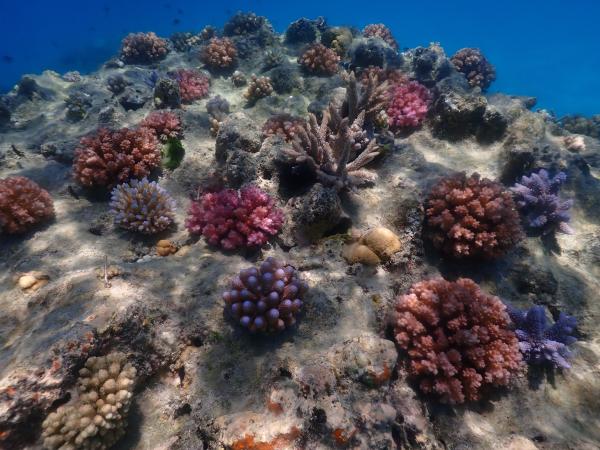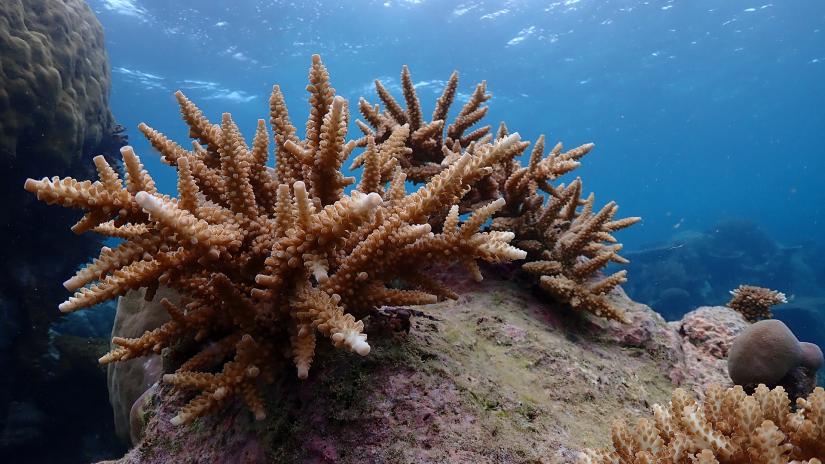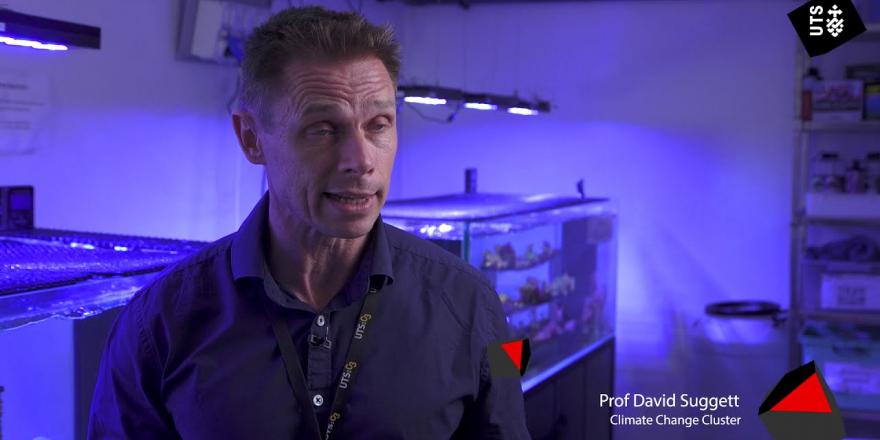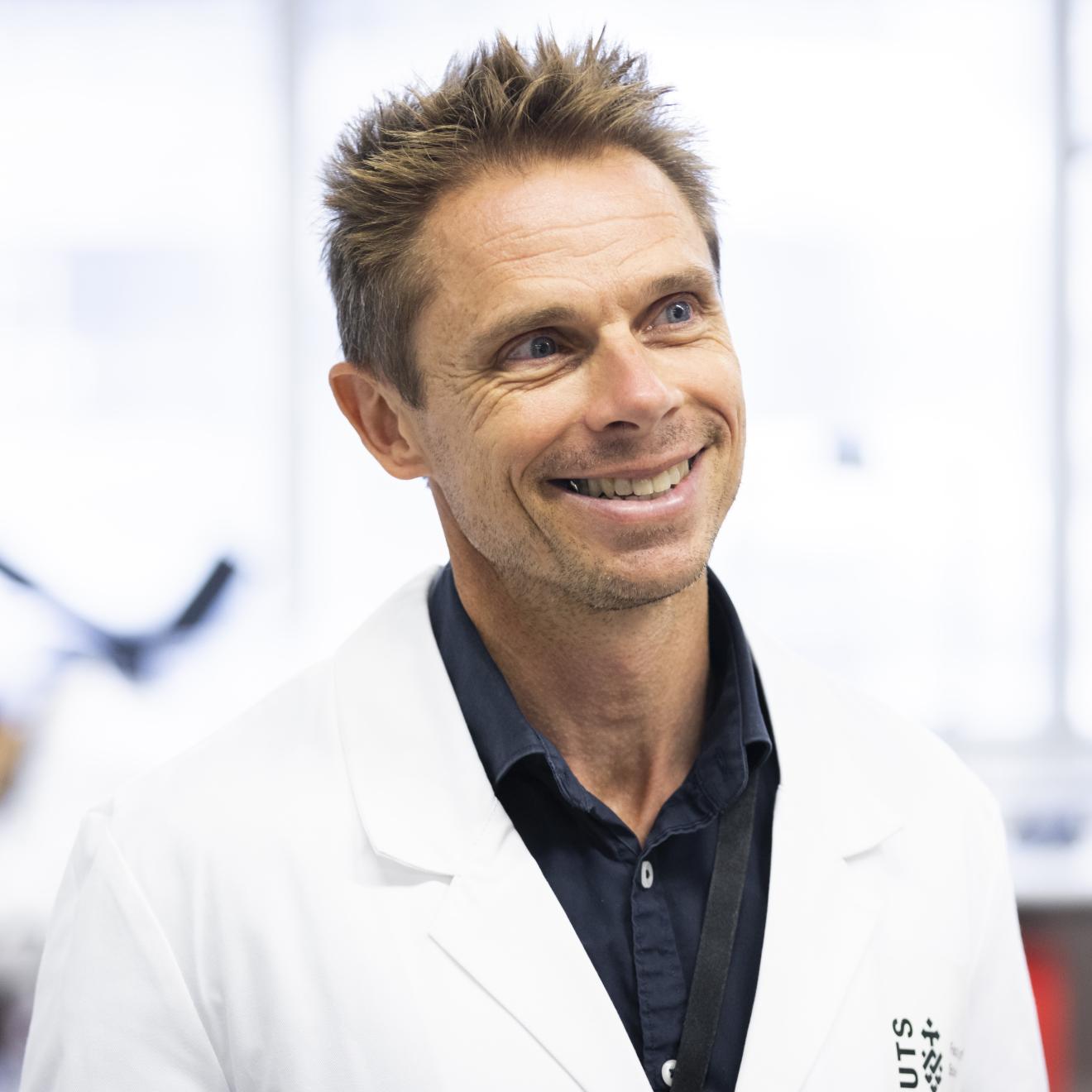In a world first, researchers at UTS are partnering with the local reef tourism industry to replant coral at scale, to fast-track the recovery of the Great Barrier Reef.
Project summary
Coral reefs are the most biodiverse marine ecosystems in the world but they face multiple threats to their survival from overfishing, water pollution and rising sea temperatures caused by climate change.
While the task of maintaining and restoring the health of the world's reefs is a huge challenge requiring a concerted effort from governments and industry, one initiative shows what can be achieved when stakeholders work together to benefit the reef and communities that rely on it.
In a world first, coral reef researchers at UTS have partnered with tourism operators in Queensland to develop an innovative coral restoration project that is already reaping benefits.
Since its inception in 2018, the Coral Nurture Program led by Professor David Suggett and Dr Emma Camp, along with John Edmondson from Wavelength Reef Cruises, has seen more than 65,000 corals planted across 27 sites from Cairns to Port Douglas. By 2021, the first corals planted had grown large enough to start reproducing on their own.
Local operators have installed over 100 reef coral nurseries to propagate 1000s of corals. The simplicity of the approach is that restoration tools and workflows integrate into day-to-day tourism operations. A novel low-cost planting device – coralclip(R) enables planting 10 times faster (and hence more cost-effectively) than before.
In 2022, the Program was launched in the second major Great Barrier Reef tourism hub, the Whitsundays.
Encouraging ecological and industry resilience
While reef tourism operators have previously participated in reef stewardship activities (such as site monitoring, and the removal of coral pests like the Crown of Thorns Starfish), the Coral Nurture Program provides a new means to enhance site recovery and longer-term resilience – of both the reef and tourism businesses.
Building the stewardship capacity of the reef tourism industry helps diversify and strengthen businesses. In 2021 operators were supported through a Government COVID19 stimulus package ("Activate Tourism") to undertake stewardship activities, including planting coral. This helped safeguard skilled workers and tourism assets (e.g. vessels) when tourism activity was low.
This evidence now forms the foundation of a new blended finance model for the industry, building both ecological resilience (strategic coral planting and site maintenance) and industry resilience (diverse yet complementary income streams).
Program expansion
Over the next three and a half years new funding support from the Great Barrier Reef Foundation through its partnership with the Australian Government's Reef Trust, and Reeftip Drinks Co., will enable tourism operators to plant tens of thousands more coral, and transition the Coral Nurture Program to be a long-term legacy of reef tourism.
Activity is coordinated alongside Coral Nurture Program co-founder Wavelength Reef Cruises and in partnership with five other tourism operators (Ocean Freedom, Passions of Paradise, Sailaway, Quicksilver Group and Down Under Cruise and Dive). More are expected to join as the success of the Coral Nurture Program is more widely shared, and with the expansion of initiates in the Whitsundays.
Given that the Great Barrier Reef region supports 64,000 jobs and contributes more than $5 billion to the local economy annually, a lot is at stake. This collaborative project between scientists, government and tourism operators demonstrates the power of working together to protect the reef ecology as well as safeguard local livelihoods.
Visit the Coral Nurture Program website for more information.
Project timeframe
2018 - 2024
SDG targets addressed by this project
Life below water:
14. 2 - By 2020, sustainably manage and protect marine and coastal ecosystems to avoid significant adverse impacts, including by strengthening their resilience, and take action for their restoration in order to achieve healthy and productive oceans.
14. 3 - Minimise and address the impacts of ocean acidification, including through enhanced scientific cooperation at all levels.
14.5- By 2020, conserve at least 10 per cent of coastal and marine areas, consistent with national and international law and based on the best available scientific information.
14.a – Increase scientific knowledge, develop research capacity and transfer marine technology, taking into account the Intergovernmental Oceanographic Commission Criteria and Guidelines on the Transfer of Marine Technology, in order to improve ocean health and to enhance the contribution of marine biodiversity to the development of developing countries, in particular small island developing States and least developed countries.
-
Professor, Climate Change Cluster
-
Chancellor's Postdoctoral Research Fellow, Climate Change Cluster
-
Key collaborators
- John Edmondson, Wavelength Reef Cruises
- Great Barrier Reef tourism operators, including Ocean Freedom, Passions of Paradise, Sailaway, Quicksilver Group, Down Under Cruise & Divers.
- Great Barrier Reef Foundation
- Reeftip Drinks Co.
- Reef Islands Initiative and Reef Catchments (Whitsundays)







